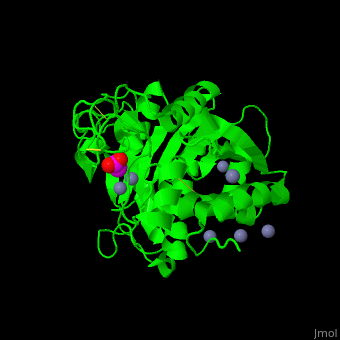
Remember to check whether the environment is acidic or basic since this will affect some of the functional groups as we have talked about previously. The only exception to this rule is proline, which has no hydrogens attached to its nitrogen since it is already connected to its own functional group. The nitrogens inside the peptide chain backbone will be neutrally charged and only have one hydrogen attached. This indicates that the peptide chain is in a completely neutral solution, which isn't often the case. If remembering to do this bugs you, you can draw the ends as an NH2 and OH. When drawing a peptide chain, only the amine and carbonyl on the ends should have a positive or negative charge (picture 1). There are some other secondary structures evident in the picture, but we won't concern ourselves with those.Īlpha helices and complete beta sheets are rather tedious to draw, but many professors expect their students to be able to draw beta turns which are the main components of a beta sheet, so we'll learn those next. Beta sheets, another type of secondary structure, are depicted as flat ribbons in the picture. As you can probably guess, alpha helices are the ones that are in helical shapes. The above picture shows different examples of secondary structure in proteins and peptide chains. These secondary structures are things like folding the chain repeatedly or curling the chain into a helical shape. In order to get around this, many peptide chains adopt secondary structures to take up less space. Now as cool as it is for peptides to be in straight chains, if that was the only form they existed in they wouldn't be able to become proteins, much less fit in our bodies. Some are easier to draw than others, but most are relatively simple. Everything fun that we do to draw the amino acids starts here.įunctional Groups: These are sections of the molecule that define what type of amino acid we’re working with. The process for drawing longer chains is the exact same, just more tedious.īackbone: This is the main structure of the amino acid. Don’t worry though, we’ll only draw chains that are at most five or six acids long. Amino acid chains that are longer than that are called polypeptides. “Short” in this case is relative generally in order for a chain of amino acids to be classified as a peptide it can have at most 50 amino acids. Peptides are short chains of connected amino acids. We’ll talk about the other parts of their structure in a minute. Each amino acid consists of a small molecule that has an amine on one end and a carbonyl group on the other. Without amino acids, life could not exist. Every protein in your body is made up of gigantic combinations of amino acids. You can write secret codes to your buddies in amino acidsĪmino acids are often referred to as the building blocks of life and for good reason. You can impress a date with your rad o-chem knowledge. You’ll be able to do these types of problems correctly on your exams and homework. Once you're more familiar with the process, it should only take you 3 to 4 minutes for a 5 acid long chain 20 minutes for a 5 acid long chain at the beginning. Until you get the hang of this, drawing peptide chains is a time consuming and aggravating process 
You will make a lot of mistakes initially, especially at getting everything to fit together properly A writing utensil of some sort, preferably a pencil.Knowledge of organic chemistry terminology (amines, amides, carbonyls, etc.).All the diagrams will be drawn using the bond line method, since this saves time when drawing molecules. The options are limitless, so buckle up and get ready for quite a ride! We’ll also review the basic purpose of amino acids and some of the fun things you can do with your newfound o-chem drawing skills for example, I spelled out my friend's name in amino acids as her Christmas gift since she's also a major chemistry nerd.
#Peptide backbone how to#
Since I don’t want other organic chemistry students muddling through like I did, here’s an instructable on how to draw peptide chains by hand. If you’re like me, following the professor’s instruction on how to draw these molecules was rather difficult. Amino acid chains, otherwise known as peptide chains, are an integral part of an organic chemistry student’s knowledge.





 0 kommentar(er)
0 kommentar(er)
